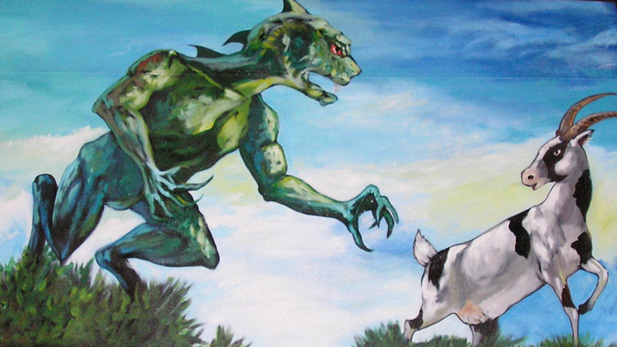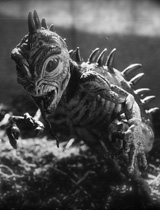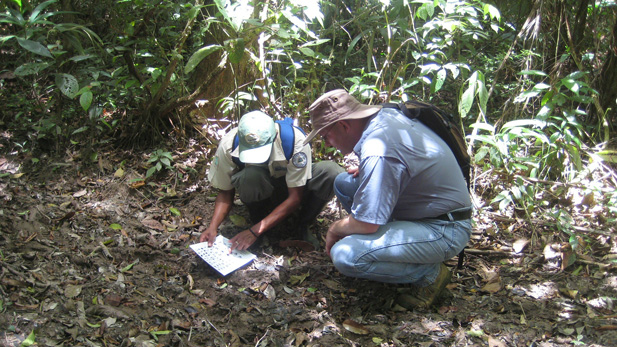 Sideshow banner at the 2005 Erie County Fair in New York, depicting a chupacabra attacking a goat.
Sideshow banner at the 2005 Erie County Fair in New York, depicting a chupacabra attacking a goat. Cryptozoology is the study of mysterious creatures for whom evidence may exist, but which are not as yet recognized by science.
The tools that a cryptozoologist has to work with are often the same as a police officer,chief among them being eyewitness testimony, forensics, psychology, and a lot of legwork. But, a keen cryptozoologist must also employ a knowledge of folklore, and an understanding of how modern media allows information to be instantly spread regardless of its veracity.

Author Benjamin Radford has written five books and hundreds of articles about monsters, urban legends, mass hysteria, and media criticism. He is the managing editor of The Skeptical Inquirer, a publication that routinely finds itself in the cross hairs of believers who want to disregard what science has to say about their pet subject or field.
Benjamin's latest book is called "Tracking the Chupacabra: The Vampire Beast in Fact, Fiction, and Folklore", published by the University of New Mexico Press, and it tackles the subject of belief vs. proof head-on.
 A model of the "original" Puerto Rican chupacabra.
A model of the "original" Puerto Rican chupacabra.A very old concept wearing a very modern face, the legend of the Chupacabra has spread quickly in the 16 or so years since it's first documented sighting. And, with each new unidentified animal carcass that is categorized as either the monster itself, or one of it's victims, it has proven to be a very internet-friendly sort of beast.
Benjamin Radford went on an expedition to find out what lurked at the heart of the legend, and he talked with Steve Bayless about what his research uncovered...
Listen to an extended version of the interview that aired on Arizona Spotlight:
 Researcher Benjamin Radford consults with a tracker in the jungles of Nicaragua, searching for a population of chupacabras.
Researcher Benjamin Radford consults with a tracker in the jungles of Nicaragua, searching for a population of chupacabras.
By submitting your comments, you hereby give AZPM the right to post your comments and potentially use them in any other form of media operated by this institution.